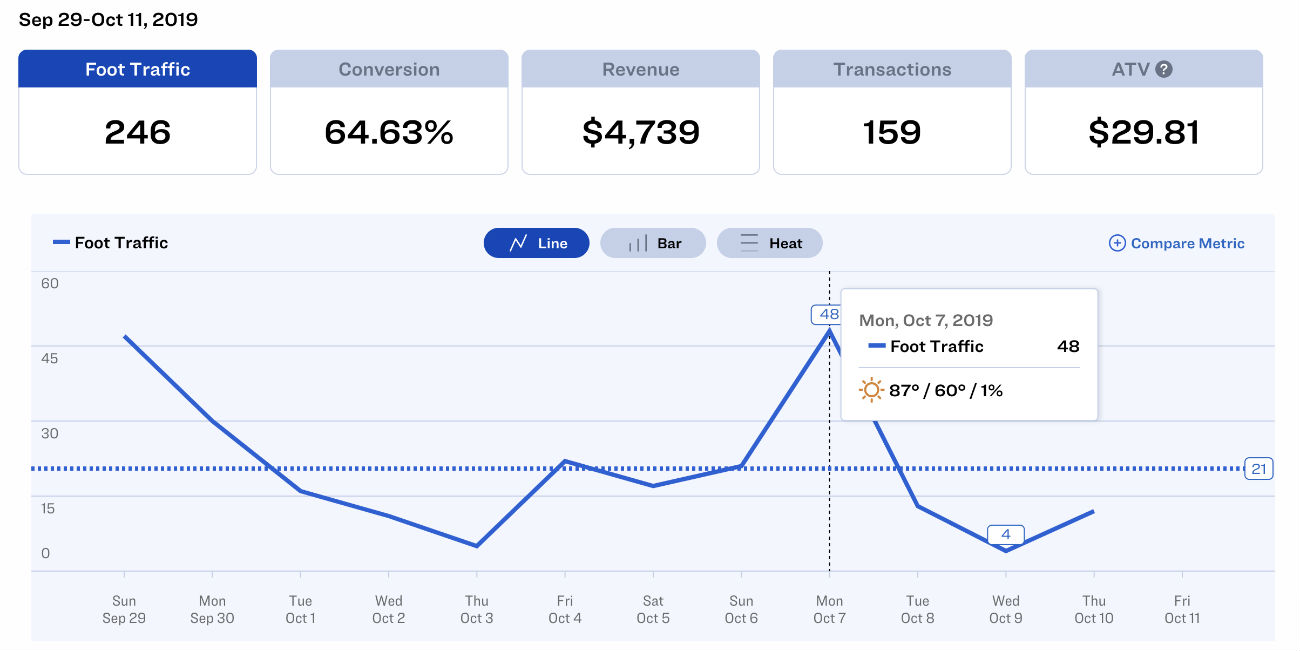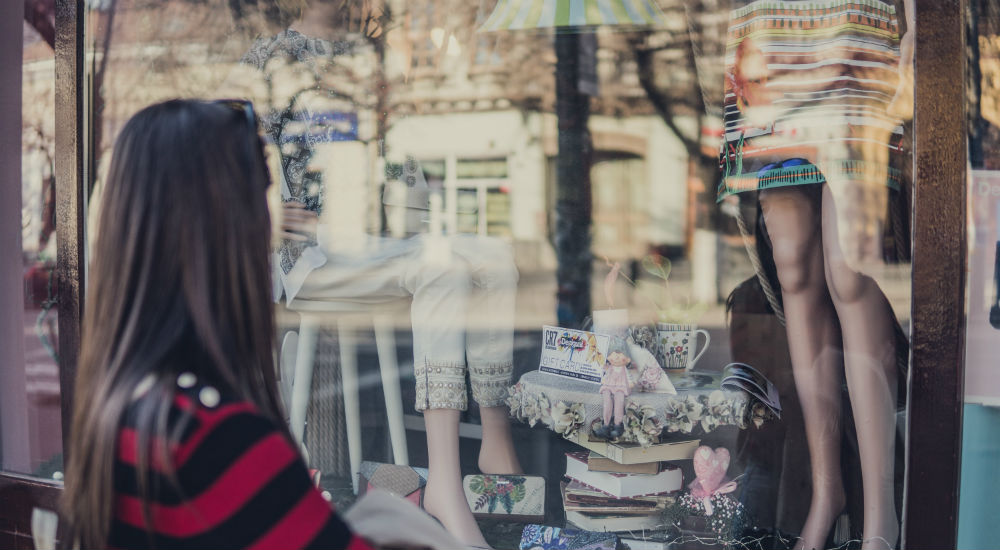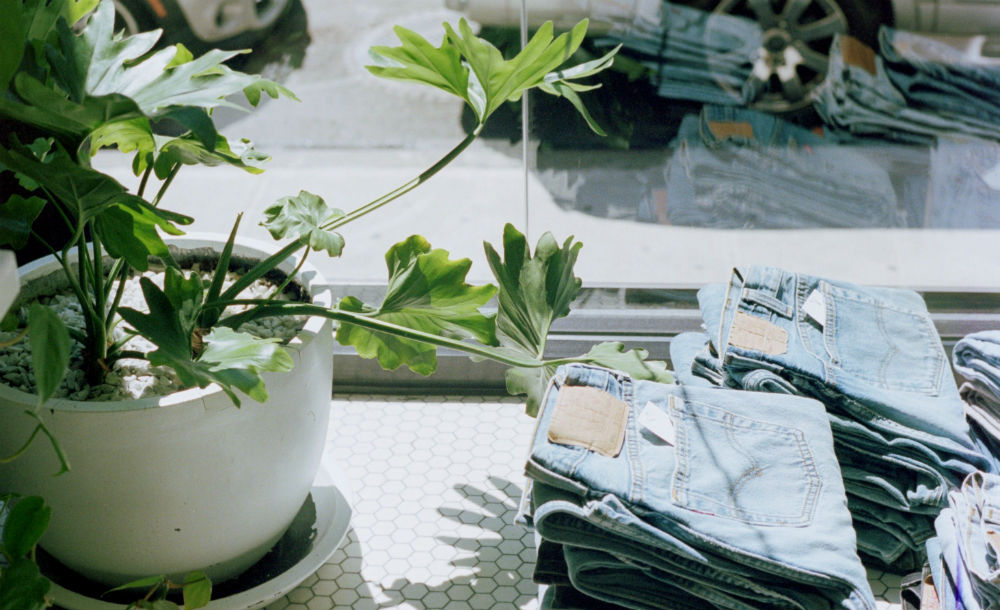As a business owner, you know that in order to make sales, you need to get people in your store. But understanding the principles of people counting and knowing what draws people to your store are two different things.
The truth is, there is a huge variety of factors that influence how much traffic passes through your store each day.
Here's the good news: while you can't control the weather or the economy, you can learn from your store's traffic patterns and how to maximize your business success regardless of the conditions.
Here are a few key factors that influence your foot traffic:
Weather
Mother Nature has a say in how many people pass through your store.
The effect of the weather changes based on where you're located, in that certain cities are more adversely affected by bad weather than others. Seattle, for example, saw a 27% decrease in foot traffic on snow days, while Atlanta saw a 10% increase in foot traffic on rainy days.
In addition, the type of store also changes how the weather affects your door traffic. All categories are negatively impacted by extreme cold and snow days, but apparel, beauty, and footwear stores all see a more than 5% increase in foot traffic on rainy days, likely because customers are seeking indoor activities.
If you're trying to attract customers even on inclement weather days, there are two key factors to keep in mind.
First, you have to offer something an online store can't, or the call of the couch wins over the call of the car. Second, you need to give the customer a reason to buy now, because it's easy to put it off until later when the weather is nicer.

Want to see how the weather correlates to your foot traffic? With Dor, you can directly measure your foot traffic alongside key information like weather patterns for each day.
Click here to discover how a people counting solution like Dor can help you make better business decisions based on your store's foot traffic data.
Location
As the old saying goes, location, location, location.
Even in the era of online shopping, when customers can take the store anywhere they can carry their phone, the physical location of your store does matter when attracting door traffic.
You see, your location is about more than your storefront.
Let's say, for example, that you want to open a convenience store, like a 7-Eleven. You tend to see convenience stores at gas stations and street corners, not malls. That's because convenience stores thrive on business from people who need a fast solution and easy purchase access, which is why customers tend to frequent convenience stores along their commuting route.
Even if you're not a convenience store, you'll see more foot traffic if your store is housed in an area people frequent (if those people are your target audience).
The best way to assess an ideal location is to determine your ideal customer and think about where they live, work, and eat. You'll see the most door traffic if you can find a location that's convenient and accessible for your target market.

Economy
This one isn't a novel concept, but it's important to understand if you want your business to continue to thrive through the highs and lows of the economy.
During a recession, a few things happen. First, businesses begin to cut expenses in an effort to stay profitable, which inevitably means cutting down the workforce. Even those employees that stay are earning less and suffering the consequences of rising costs of living.
With increasing portions of their income going to basic expenses, in many cases without the income needed to support those expenses long-term, many consumers wind up heavily in debt with little to no savings. Between reduced spending and defaulting credit card debt, the net result for retailers is the same: less door traffic.
It is certainly possible to attract customers in a recession, provided that you know what you're doing. The most important element is to close your needs-offer gaps -the gap between what the customer needs and what you offer.
Type of business
Some types of businesses are simply better at attracting foot traffic than others. This isn't a question of marketing or luck, but rather a question of what type of good or service the business provides that cannot be matched online.
To understand how this works, take a look at the three businesses with the most foot traffic: Wal-Mart, McDonald's, and Subway.
For McDonald's and Subway, the door traffic draw is obvious: affordable food that isn't available for delivery online, along with easy-to-access store locations. Customers get a service that they want (affordable food) that cannot be had through any other avenue, so they're willing to leave their homes to get it.
In addition, Subway and McDonald's both make it easy to access the service once you get there.
Seasonality
Take a look at the calendar, because the time of year can also impact how many people come to your store.
For most businesses, the best known season is mid-November through December, a.k.a. the holiday season. This is when consumers are buying for others, spending beyond their necessities. Plus, because they're buying for others, they're more susceptible to sentimental advertising.
However, seasonality (and your subsequent door traffic) depends on the market's demand for your product based on the time of year. Gardening stores, for example, see a 38.43% increase in sales from April through July, when home gardeners are gathering the materials they need to make their gardens the envy of the neighborhood.
Marketing efforts of the business
There are literally hundreds of ideas for marketing a business but those that are most effective bring people in the door are store events that engage the community.
Think about hosting a seminar or workshop. Hold a short-time sale at a certain branch location on a hot item and let fans know about it on social media. Have a sweepstakes contest where entries can be made in-store only. Share in-store coupons via email newsletters.
These are all tried-and-true techniques.
Related: 40 Ideas to Boost Retail Foot Traffic and Increase Sales

The look and feel of the store
Finally, don't underestimate the importance of your store's atmosphere.
The process begins with your window displays, your first chance to show off your curb appeal and draw customers in. To understand why that is, you can learn a thing or two from the survival of parsley growers.
Hear us out. Not that many people actually eat parsley or use it as the main feature of their meals. And yet, parsley remains a common item in most grocery stores and restaurants. That's because chefs are taught the importance of food presentation, and parsley is wildly popular as a garnish, providing just enough color and texture in photographs to make you want the dish.
The same thing applies to your store.
That appeal extends to when customers are inside your store. One study found that customers subconsciously rank stores based on their perceived atmosphere.
Customers' mood improved throughout their shopping in a pleasant store atmosphere compared to an unpleasant one, and customers were more likely to make a spontaneous purchase in a pleasant store atmosphere.
Ready to improve your foot traffic?
Whether you've had enough of slow store days or you want to learn how to better manage and predict the traffic you do have, we offer the people counting tools you need to take charge of your door traffic and turn passersby into paying customers.
Click here to discover how a people counting solution like Dor can help you make better business decisions based on your store's foot traffic data.